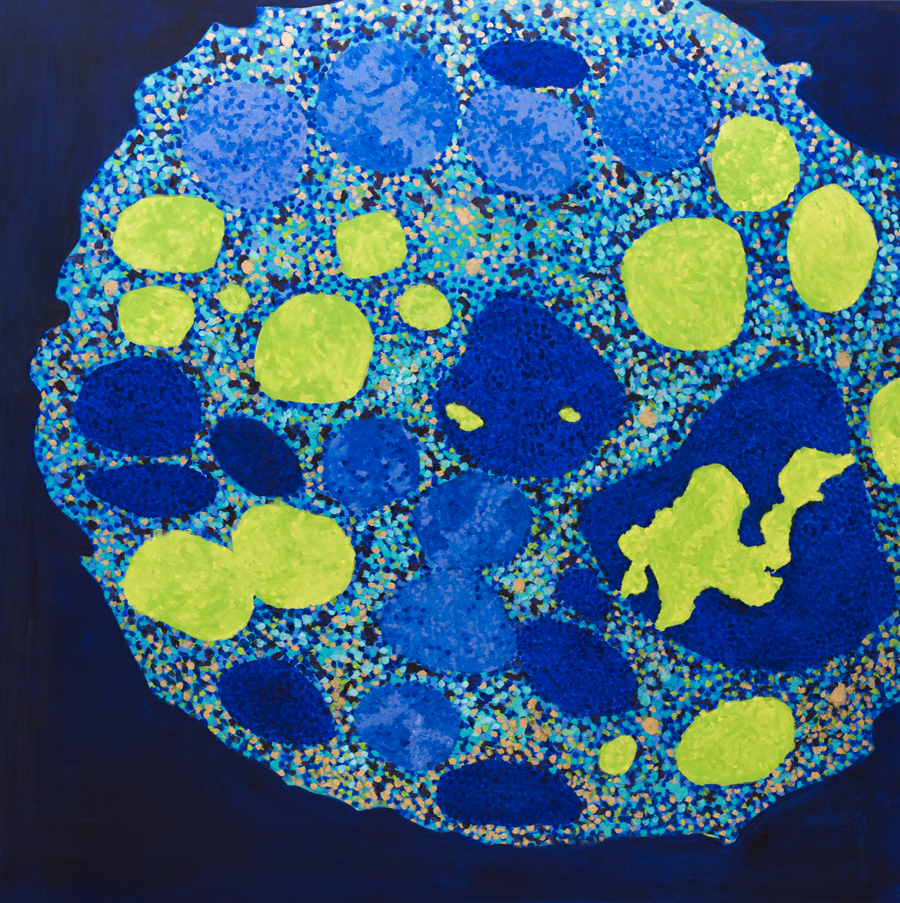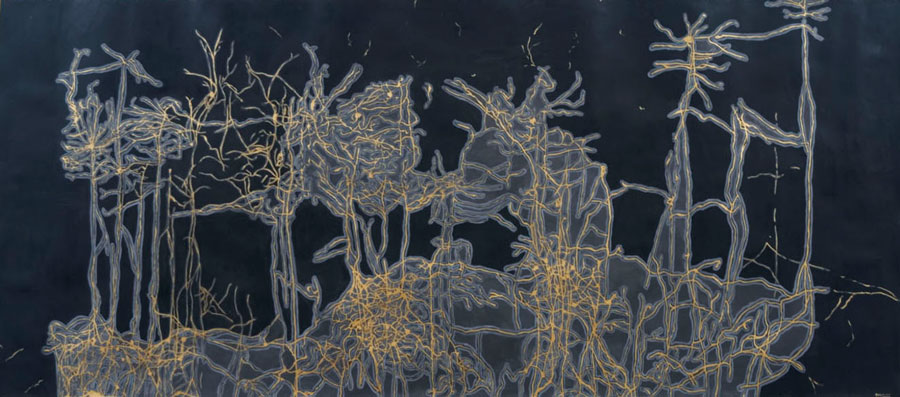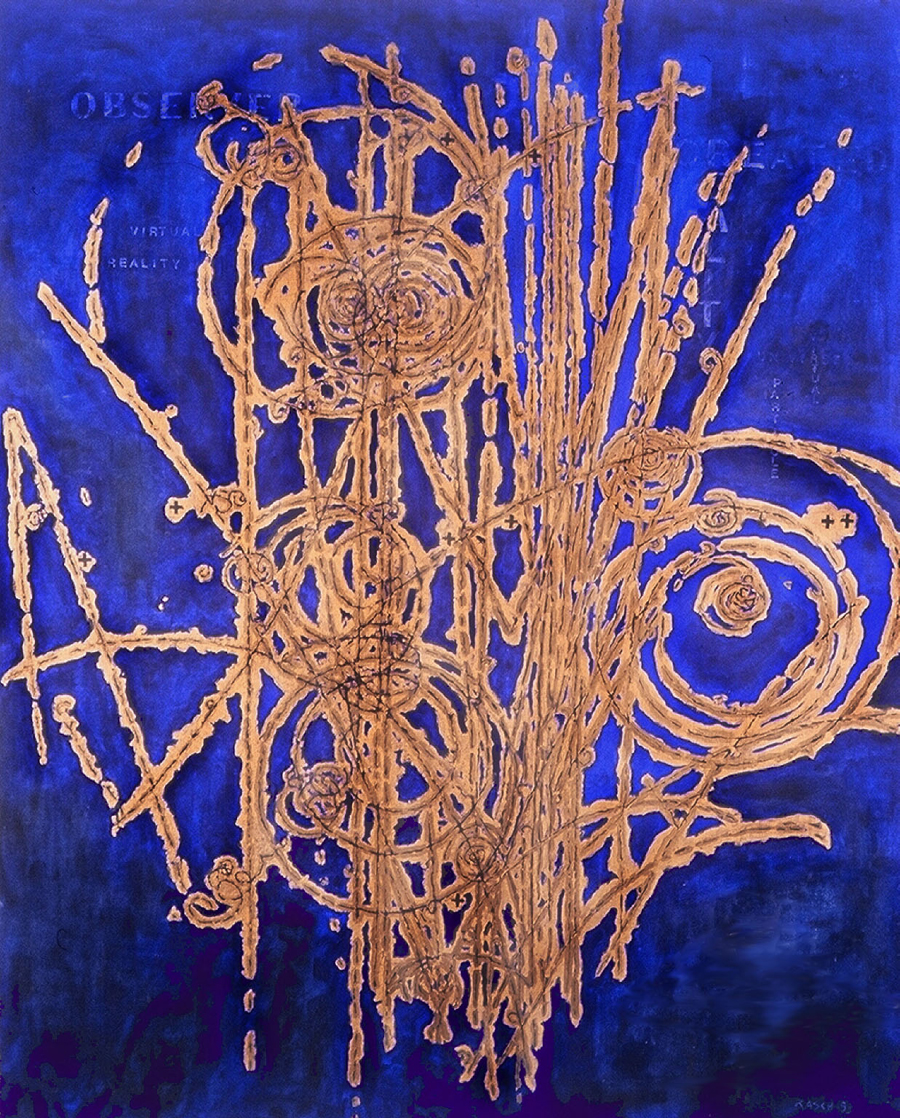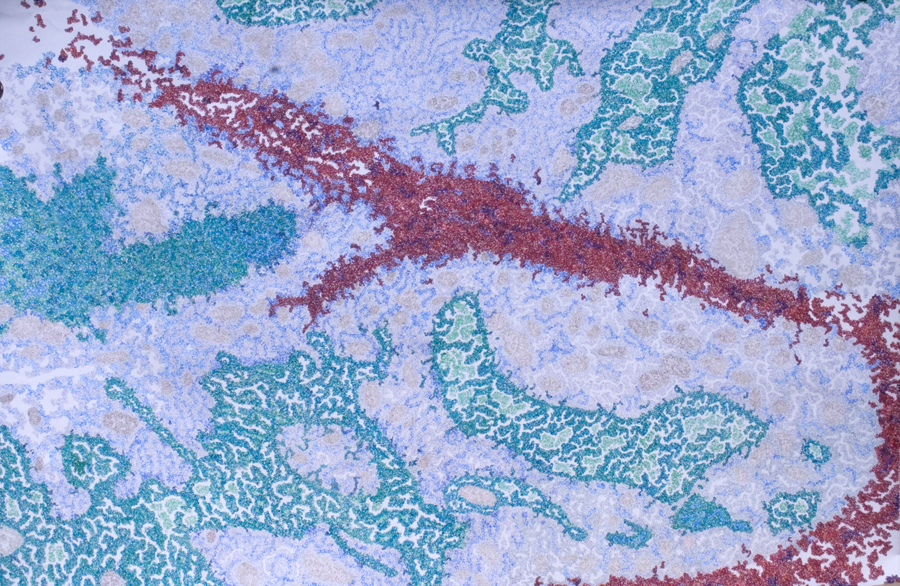Name: Jody Rasch
Which came first in your life, the science or the art?
The science came first. I was interested in sub-atomic and quantum physics because of their philosophical nature. It made me question how the world works. The quantum world is so different from the macro world. In the quantum sphere how we observe something changes its very nature. Also, in the quantum world there is always a certain amount of uncertainty, so nothing can ever be known with absolute accuracy. These concepts can be transferred to the macro world and allow us to question our preconceived notions of how the world works. It should impact our interactions with one another and make us question the assumptions we make about ourselves and others.
I wanted a way to express this feeling. I had been painting for almost ten years at that point, primarily doing landscape and still life. I wanted to find a way of incorporating my personal quest to understand the nature of the universe into my art.

White Blood Cell

White Blood Cell

White Blood Cell
Which sciences relate to your art practice?
The images are drawn from various science practices, including biology, astronomy and sub-atomic physics. The scale of the actual images contrasts with the size of the artwork. The biological and physics images are massively enlarged and the astronomical images are equally drastically reduced. The goal is to bring the images to a more human scale such that the viewer can relate to the real elements that make up our world and universe.
Physics: The realm of particle physics is like discovering a new philosophy. Particles can be everywhere at once and can both be waves or particles, depending on how we observe them. In particle physics, nothing is certain. I try to incorporate these themes into the images by using phrases from particle physics such as “User Created Reality” or formulas such as the one for Heisenberg’s uncertainty principle.
Astronomy: The astronomy images are drawn from radio astronomy which creates images based on differentiating light of varying wavelengths. The colors produced are artificial so I play with the mixtures of colors as well as some of the non-essential backgrounds. The themes used relate to understanding the nature of space and time. I use images of cosmic background radiation, the heat signature for the “big bang” or images of how space-time is distorted by massive objects, which is also a proof of Einstein’s theory of relativity.
Biology: The biological images explore our relationship with nature and the duality of our existence. I use images of deadly viruses and infections that, while beautiful to look at, belie their destructive qualities. I also use images of symbiotic relationships between plants and bacteria as well as reproducing some vital functions including neurons and rods and cones of the eye.

Thought/Mouse Neuron

Uncertainty
What materials do you use to create your artworks?
I use a variety of techniques and media to get my message across. I have used oils and acrylics as well as pastels, both oil and soft. Also, images are on paper, board and canvas. One recurring theme I use regardless of the medium is the use of gold in many of the images. The gold is drawn from the gold halos of religious painting and, in my work, symbolizes the replacement of religion with science as the way to explain the nature of the universe. In addition, many of the works use a pointillist technique in their construction. Large paintings may use tiny brush strokes and many of the large drawings use small lines to build them up. In these works the observer’s eye blends the colors and positive and negative shapes together. This echoes the theme of the subject matter of “Observer Created Reality”.

Particle Shower 2

Particle Shower 1
Artwork/Exhibition you are most proud of:
There is no one particular artwork I’m most proud of, but I have a particular interest in incorporating scientific formulas or words into the background of my work. I feel this creates additional layers of interest for the observer and shows how math can also be art. The largest show I have done was a one-year exhibition in the lobby of the Pfizer Corporation in Manhattan. It showcased a number of my larger biology pieces.

Lifeless

Deficiency
Which scientists and/or artists inspire and/or have influenced you?
I have followed Brian Greene and Lisa Randall among others. I find their writings very accessible and provocative. As for artists, one of my favorites is Kandinsky. He, and other abstract expressionists incorporated science themes into their works. Also, they looked at art more philosophically. In addition, I like the techniques of expressionists such as Seurat. I also like the emotions that I get from Chagall as well. More recently I have been interested in the muted colors used by Agnes Martin and how she uses that technique to create a more contemplative feeling in her work.

Sweet/Diabetes

Symbiosis
Is there anything else you want to tell us?
There are multiple dimensions that I am trying to communicate in my work, but mostly I want the observer to begin to question what he/she believes. For me the exploration of the concepts behind the work is the most interesting. It allows me to question my beliefs, to think about the true nature of things, and I challenge myself to look past what is in front of me. This is what I mean by ‘unseen/seen’. As I translate the science
concepts onto paper or canvas or board, I get a greater appreciation for the beauty of the things we cannot see and how mysterious our universe really is. That is what I want to explore and communicate to the observer: look beyond what you see and discover a richer more interesting universe.
Share this Post

